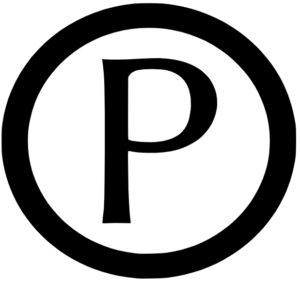Quick Summary
Understanding the distinctions between copyrights, trademarks, and patents is essential for protecting various forms of intellectual property. A copyright safeguards original works of authorship, such as literature, music, and art, granting creators exclusive rights to reproduce and distribute their creations. A trademark protects symbols, names, and slogans used to identify goods or services, preventing others from using similar identifiers that could cause consumer confusion. A patent secures exclusive rights for inventors over their new inventions or processes, prohibiting others from making, using, or selling the innovation without permission. Each form of protection serves a unique purpose in safeguarding intellectual property rights.
Blog Content Overview
- 1 Introduction
- 2 What is Intellectual Property?
- 3 What is copyright?
- 4 What are the rights protected under copyright?
- 5 What does copyright include?
- 6 What is not protected under copyright?
- 7 Benefits of Copyright
- 8 Duration of Copyright
- 9 Fair Use Doctrine
- 10 Landmark Cases & Judgements in India concerning Copyrights
- 11 What is a Trademark?
- 12 What does a trademark protect?
- 13 What is not protected under trademark?
- 14 Types of Trademark
- 15 Benefits of Trademark Protection
- 16 Trademark Duration
- 17 Landmark Cases & Judgements in India concerning Trademarks
- 18 What is a Patent?
- 19 Patentability and Non-Patentability of Inventions
- 20 What all can be Patented?
- 21 What all cannot be patented?
- 22 Types of Patents
- 23 Patent Duration
- 24 Landmark Cases & Judgements in India involving Patents
- 25 Copyright vs Trademark vs Patent
- 26 Common FAQs on Copyrights, Trademarks and Parents
Introduction
In the ever-evolving landscape of innovation, intellectual property rights (IPR) serve as the cornerstone of creativity and progress. It’s the shield that protects original ideas, inventions, and brand identity, to reap the rewards of one’s hard work and rightfully enjoy the reputational credit of being the first, original creator of a certain intangible property.
India’s decision to be a signatory to international intellectual property conventions, like the Berne Convention for the Protection of Literary and Artistic Works and the Agreement on Trade-Related Aspects of Intellectual Property Rights (TRIPS), signifies its commitment to upholding a global framework for protecting creativity and innovation. These conventions establish a set of rules and minimum standards that member countries, including India, agree to implement within their legal systems.
This article aims to explain Difference between Copyrights, Trademarks and Patents and their associated legal intricacies which are the three most widely implemented types of intellectual property protection. From safeguarding original works of authorship to securing exclusive rights for groundbreaking inventions, and establishing a recognizable brand identity, this research article will equip you to choose the most effective form of IP protection for the specific needs of your creation.
What is Intellectual Property?
Intellectual property (IP) refers to creations of the mind. These creations are intangible, meaning they can’t be physically held and can include inventions; literary and artistic works; designs; and symbols, names, and images used in commerce, as defined by the World Intellectual Property Organization (WIPO). Intellectual property rights (IPR) serve as the cornerstone for fostering innovation and creativity across various industries, by providing legal protection to inventors, creators, and businesses for their unique ideas and creations. The importance of intellectual property rights lies in their ability to promote a fair competitive environment, encouraging the development of new technologies, artistic expressions, and brands. By securing exclusive rights to use, share, and monetize their creations, individuals and companies are incentivized to invest in research and development, leading to economic growth and the advancement of human knowledge.
A) Types of Intellectual Property: The most common types of Intellectual Property Rights (IPR) include:
- Copyright: Protects original works of authorship like books, music, software, and artistic designs.
- Patents: Grants exclusive rights for new and inventive products or processes.
- Trademarks: Distinguishes the source of goods or services, allowing consumers to identify a particular brand.
- Trade secrets: Confidential information that provides a competitive advantage, such as a unique formula or manufacturing process.
B) Importance of Intellectual Property: IPR protection plays a vital role in:
- Protects Innovation and Creativity: IPR incentivizes people to create new things by giving them control over their inventions, designs, and creative works. Knowing their work is protected encourages investment in research and development, which fosters innovation.
- Competitive Advantage: IPR can be a significant source of competitive advantage for businesses. A unique product design protected by a trademark or a groundbreaking invention with a patent can set a business apart from competitors.
- Monetization: IPR can be a way to generate income. Owners can license their rights to others for a fee, or they can sell their rights altogether. This can be a valuable revenue stream for individuals and businesses.
- Builds Brand Reputation: Strong trademarks can help build brand recognition and customer loyalty. Customers associate a trademark with a certain level of quality and trust, and IPR helps ensure that only the authorized owner can use that mark.
- Promotes Fair Trade: IPR enforcement helps prevent counterfeiting and piracy. This protects consumers from getting lower-quality goods and helps ensure that creators are fairly compensated for their work.
What is copyright?
Copyright © is a right given by the law protecting the original form or expression to creators of literary, dramatic, musical, and artistic works and producers of cinematograph films and sound recordings. Copyright does not protect brands or names, short word combinations, slogans, short phrases, methods, plots, or factual information. Copyright also does not protect ideas or concepts.


The meaning of copyright is mentioned under the Indian Copyright Act, 1957 (hereinafter ‘Copyright Act’) in Section 14 which essentially states that exclusive rights are granted to the owner of a copyright.
- Section 14: Meaning of copyright – This section defines the exclusive rights granted to copyright owners. These rights typically include reproduction, distribution, public performance, and adaptation of the copyrighted work.
- Section 13: Acts not infringing copyright – This section outlines certain actions that don’t constitute copyright infringement. These may include fair dealing for purposes like research, criticism, or review.
- Sections 15-21: Deal with specific rights and limitations – These sections cover various aspects of copyright ownership and limitations on those rights. They delve deeper into specific rights for certain types of creative works, like cinematograph films, sound recordings, and performer’s rights.
What are the rights protected under copyright?
Here are the main types of rights protected by copyright:
- Reproduction rights: This allows the copyright owner to control how their work is copied, whether in physical form (printing a book) or digital form (downloading music).
- Distribution rights: This grants the copyright owner control over how copies of their work are distributed to the public. This could include selling books, distributing movies, or making music available online.
- Public performance or communication rights: The copyright owner controls how their work is performed or communicated to the public. This could involve public readings of a book, screenings of a film, or online transmissions of music.
- Adaptation rights: This allows the copyright owner to control the creation of derivative works based on their original work. This could include translations, adaptations for films, or other modifications.
Copyright primarily protects two main categories of rights: economic rights and moral rights.
- Economic rights
These are the exclusive rights that allow the copyright owner to financially benefit from their work. They encompass the reproduction, distribution, public performance, and adaptation rights as mentioned earlier. - Moral rights
Moral rights are distinct. These rights are personal and non-economic. They protect the creator’s non-financial interests in their work:
a) The right of attribution: This ensures the creator is identified as the author of the work.
b) The right of integrity: This allows the creator to object to any distortion or modification of their work that could damage their reputation.
Moral rights are separate from economic rights and continue to belong to the author and cannot be transferred or sold. They remain with the creator even if they assign their economic rights to someone else.
What does copyright include?
The Copyright Act protects original expressions in various creative works. Section 13 of the Act specifies the types of works that can be copyrighted:
- Literary works: This includes written materials like books, articles, poems, scripts, computer programs, and compilations like databases.
- Dramatic works: Plays, screenplays, and other works intended for performance fall under this category.
- Musical works: Original musical compositions, with or without lyrics, are protected.
- Artistic works: This broad category encompasses paintings, sculptures, drawings, photographs, architectural works, and any other artistic creations.
- Cinematograph films: Movies and films are included in this section.
- Sound recordings: Recordings of music, speeches, or other sounds are protected. It’s important to note that copyright protects the original form of expression in these works, not the ideas themselves.
What is not protected under copyright?
While the Copyright Act safeguards creative expression, it doesn’t encompass everything under the sun. This law grants copyright protection to specific categories of original works. Let’s delve into what elements fall outside the scope of copyright. Here’s a list of things that generally fall outside the copyright ambit:
- Ideas, concepts, and methods: Copyright protects the way something is expressed, not the underlying idea, concept, or method itself. For instance, the concept of a love story cannot be copyrighted, but the specific expression of that story in a novel can be.
- Facts and information: Factual information, common knowledge, and news items are not copyrightable.
- Short phrases, names, and titles: Copyright doesn’t typically protect short phrases like slogans, names, titles, or common expressions.
- Official documents and symbols: Government reports, emblems, and other official documents are not protected by copyright. Simple formats and arrangements: Standard calendars, height and weight charts, or phone directory layouts wouldn’t be copyrightable.
- Works that haven’t been fixed in a tangible form: Copyright protects things that are expressed in a physical or digital medium. Improv comedy or a speech wouldn’t be protected until written down or recorded.
- Public domain works: Works whose copyright term has expired or that were never copyrighted in the first place fall into the public domain and can be freely used by anyone.
Benefits of Copyright
Copyright offers several benefits that incentivize creativity and protect the rights of creators. Here are some key advantages:
- Encourages Creativity: Copyright grants creators exclusive control and the potential for financial gain from their work. This incentive fuels the creation of new and original works across various fields.
- Protects Investment: The creative process often requires substantial time, effort, and resources. Copyright safeguards these investments by allowing creators to control how their work is used and potentially earn royalties or licensing fees.
- Fair Compensation: Copyright ensures creators are fairly compensated for their work. They control commercial use and can choose to license their work for a fee or sell copies directly.
- Builds Brand Reputation: Strong copyright protection allows creators to manage how their work is presented to the public. This helps them build and maintain a positive reputation associated with their brand or style.
- Promotes Innovation: Copyright protection extends to areas like software and computer programs. This incentivizes investment in research and development, fostering innovation that benefits society as a whole.
Duration of Copyright
Copyright protection in India grants creators a set time frame of exclusive rights over their original works. The duration of copyright protection varies depending on the type of work:
- Literary, Dramatic, Musical, and Artistic Works: For these works, copyright protection lasts for the lifetime of the author plus 60 years from the year following the author’s death. If the work is created by multiple authors (joint authorship), the duration is 60 years from the death of the last surviving author.
- Cinematograph Films, Sound Recordings, Photographs: The copyright term for these works is 60 years from the year of their publication. For unpublished works in these categories, the duration is 60 years from the year of creation.
- Posthumous Publications, Anonymous and Pseudonymous Publications: These works are protected for 60 years from the year of their publication.
- Works of Government and Works of International Organizations: These works have a copyright term of 60 years from the year of their publication.
Section 22 of the Indian Copyright Act focuses on the term of copyright for published literary, dramatic, musical, and artistic works. Here’s a breakdown of what it says:
- General Rule: Copyright in these types of works subsists during the lifetime of the author and for 60 years after the beginning of the calendar year following the year in which the author dies.
In simpler terms, the copyright protection for these works lasts for the author’s lifetime plus 60 years after their death. - Joint Authorship: The explanation included in Section 22 clarifies that for works with multiple authors (joint authorship), the 60-year period starts after the death of the last surviving author.
So, if a book is written by two authors and one passes away in 2020, copyright protection continues until 2080 (60 years after the second author’s death, assuming they die in 2040).
Fair Use Doctrine
The Copyright Act, 1957, recognizes the concept of fair dealing, a crucial doctrine that carves out exceptions to copyright infringement. This doctrine allows for the limited use of copyrighted material without the copyright holder’s permission, fostering a balance between protecting creators’ rights and enabling public access to information. Section 52 of the Act lays the groundwork for fair dealing. It specifies that “fair dealing with any literary, dramatic, musical or artistic work for private use, research, criticism or review, whether of that work or any other work” shall not constitute copyright infringement. The Act, however, doesn’t provide a rigid definition of “fair dealing.”
In the judicial pronouncement of, Folsom vs Marsh, the doctrine of fair use emerged for the first time in the USA, wherein, Justice Story set forth the following four factors to determine a work to be of Fair Use, which later went to be codified under the Copyright Act, 1976:
- “The nature and objects of the selections made;
- The nature of the original work;
- The amount is taken; and
- The degree in which the use may prejudice the sale, or diminish the profits, or supersede the objects, of the original work.”
It was through the Copyright (Amendment) Act, 2012 that fair dealing as a concept brought within its scope musical recordings and cinematograph films, as laid down in the ruling of India TV Independent News Services Pvt. Ltd. vs Yashraj Films Pvt. Ltd. This case established a crucial precedent for fair use of copyrighted material in India, particularly for news reporting, criticism, and commentary. It allows for limited use of excerpts from musical recordings and films without permission from the copyright holder, as long as the use falls under the fair dealing ambit.
Landmark Cases & Judgements in India concerning Copyrights
1) Super Cassettes Industries Limited vs Google and YouTube (2008): This case addressed the issue of online copyright infringement. The court held that online platforms like YouTube have a duty to take down infringing content if they are notified by the copyright owner. This case played a significant role in shaping the online copyright landscape in India.
2) R.G. Anand vs. Deluxe Films and Ors. (1978): This case established the principle that copyright protects the expression of ideas, not the ideas themselves. The plaintiff, a playwriter, sued a film producer for copyright infringement because the film’s plot was similar to his play. The court ruled that while the themes might be similar, the way they were expressed in the play and film were distinct.
3) Ratna Sagar (P) Ltd. vs. Trisea Publications and Ors. (1996): This case dealt with copyright infringement of children’s educational books. The court ruled that copying the substantial and original elements of the book’s layout, illustrations, and content constituted copyright infringement. This case highlighted the protection extended to creative elements beyond just the text in a work.
4) Shree Venkatesh Films Pvt. Ltd. vs. Vipul Amrutlal Shah and Ors. (2009): This case involved a dispute over the copyright of the iconic Hindi film dialogue “Mogambo khush hua” (Mogambo is pleased). The court ruled that short phrases or slogans might not be protected by copyright on their own, but they could be protected if they are unique and distinctive elements within a larger copyrighted work (the film in this case).
What is a Trademark?
A trademark ™ is a mark capable of being represented graphically and which is capable of distinguishing the goods or services of one person from those of others. It can include the shape of goods, their packaging, and combinations of colors. In other words, trademarks can be almost anything that distinguishes the products and/or services from others and signifies their sources. Brand names, taglines, and logos are some examples.
The definition of a trademark according to the Trademark Act, 1999 of India (hereinafter ‘Trademark Act’) is provided in Section 2(zb). It states: “trademark means a mark capable of being represented graphically and which is capable of distinguishing the goods or services of one person from those of others and may include the shape of goods, their packaging, and combination of colors.”


Breaking down the definition, following are the the key elements:
- capable of being represented graphically;
- capable of distinguishing the goods or services of one person from those of others;
- may include the shape of goods, their packaging, and combinations of colors.
Under the Trademark Act, the word “mark” is defined under Section 2(1)(i)(V)(m) as “a device, brand, heading, label, ticket, name, signature, word, letter, numeral”. The term “Mark” under the Act also includes the shape of goods, packaging, or combination of colors or any other type of combination.
What does a trademark protect?
A trademark protects various elements that act as identifiers for your brand, not the product or service itself. Following are the aspects that are covered under the umbrella protection of trademark:
- Logos, Symbols, and Designs: This is the most common type of trademark. It encompasses logos, symbols, or even unique product designs that visually represent your brand. For instance, the swoosh symbol identifies Nike and the golden arches represent McDonald’s. Registering these visual elements as trademarks prevents competitors from using confusingly similar designs that could mislead consumers.
- Words, Phrases, and Slogans: Catchy brand names, slogans, or even short phrases can be registered as trademarks. Think of “Just Do It” by Nike or “Melts in Your Mouth, Not in Your Hand” by M&M’s. Trademark registration protects these unique word combinations and ensures they’re solely associated with your brand.
- Sounds and Audio Elements: While less common, distinctive sounds or audio elements associated with a brand can also be trademarked. For example, the MGM lion’s roar or the Netflix startup sound are registered trademarks that instantly bring a brand to mind.
- Packaging and Color Combinations: The unique design or color scheme of your product packaging can be protected as a trademark if it’s distinctive enough to identify your brand. For instance, the distinctive yellow color of BIC pens or the Tiffany blue packaging are registered trademarks.
What is not protected under trademark?
However, there are certain categories of marks that generally cannot be registered as trademarks:
- Generic Terms: Words or phrases that have become synonymous with the product or service itself cannot be trademarked. For instance, “computer” or “running shoes” wouldn’t be protectable trademarks because they are generic terms for those products.
- Descriptive Marks: Marks that merely describe the qualities, ingredients, functions, or characteristics of the product or service are not registrable. For example, “shiny shoes” for footwear or “long-lasting battery” for a mobile phone wouldn’t qualify as trademarks.
- Deceptive or Misleading Marks: Marks that could mislead consumers about the nature, place of origin, or qualities of the product or service cannot be registered. For instance, a trademark for woolen clothing depicting a tropical island would be considered deceptive.
- Immoral or Scandalous Marks: Marks that are considered offensive, indecent, or against public morality cannot be registered. The Trademark Office would likely reject such applications.
- Marks Lacking Distinctiveness: Marks that are too common, generic, or lack any inherent distinctiveness wouldn’t be registrable. For example, a simple geometric shape or a common letter wouldn’t qualify as a trademark unless it has acquired distinctiveness through use in association with a specific brand.
- Flags and Emblems: The use of national flags, emblems, or official symbols is restricted and cannot be registered as trademarks without proper authorization from the relevant authorities.
Types of Trademark
The Trademark Act serves as the foundation for protecting and registering trademarks in India. While the Trademark Act doesn’t explicitly categorize types of trademarks, the following are the most common types categorized based on their utility:
- Product Marks: Product marks represent the brand name, logo, or symbol associated with a specific product. They are the first point of contact for consumers, helping them identify the source and quality of the goods. Examples: The iconic Apple logo instantly identifies Apple smartphones and computers.
- Service Marks: Service Marks act as identifiers in a world of intangible offerings, allowing consumers to choose between various service providers. Examples: Think of “Uber” for ride-hailing services or “FedEx” for delivery services. These service marks help consumers differentiate between different transportation options available.
- Collective Marks: Collective marks are used by a group of entities, typically an association or organization, to identify their members or the goods or services offered by its members. Examples: A prominent example in India is the “Khadi Mark” used by certified producers of khadi fabric. This mark signifies that the fabric adheres to specific production methods and ethical practices promoted by the Khadi and Village Industries Commission.
- Certification Marks: Certification marks act as a seal of approval for certain characteristics of a product or service. They function as independent third-party endorsements, assuring consumers that the product or service meets specific quality standards. Examples: The ISI mark (Bureau of Indian Standards) is a well-known certification mark in India. It signifies that a product has undergone rigorous testing and meets established quality standards.
- Shape Marks: The Trademark Act allows for the registration of the shape of goods or their packaging as a trademark if it’s distinctive enough to identify the source. This opens doors for creative branding strategies that go beyond traditional logos and symbols. Examples: The bottle shape of Coca-Cola or the triangular Toblerone chocolate packaging. These unique shapes have become synonymous with the respective brands, allowing for instant recognition on store shelves.
- Sound Marks: While less common, distinctive sounds or audio elements associated with a brand can be registered as trademarks in India. This allows businesses to leverage the power of sound to create a unique brand identity. Examples: Imagine the iconic MGM lion’s roar before a movie or the familiar Netflix startup sound.
Benefits of Trademark Protection
Trademark protection under the Trademark Act offers a multitude of benefits for businesses, fostering brand growth and safeguarding their hard-earned reputation. Here are some key advantages to consider:
- Brand Protection: Trademark registration prevents competitors from using confusingly similar marks that could mislead consumers and dilute your brand’s reputation. This ensures your brand identity is protected.
- Builds Brand Recognition: A strong trademark becomes synonymous with the quality and trust associated with your brand. Consumers can easily recognize your trademark and rely on it when making purchasing decisions.
- Controls Brand Image: Trademark protection allows you to control how your brand is presented to the public. This ensures consistency and prevents unauthorized use that could damage your brand’s image.
- Market Differentiation: A unique and well-protected trademark sets your brand apart from competitors. It allows you to establish a distinct market presence and attract customers seeking a specific brand experience.
- Legal Action: Trademark registration provides a legal basis for taking action against infringers. This can involve stopping the infringement, seeking compensation for damages, and recovering attorney fees. It strengthens your legal position and deters counterfeiting.
Trademark Duration
Unlike copyright, trademarks in India don’t have a set expiration date. However, they require renewal every 10 years to maintain exclusive rights. Here’s a breakdown of how trademark duration works in India:
- Initial Registration: A trademark registration in India is valid for 10 years from the date of filing.
- Renewal: To maintain exclusive rights after the initial 10 years, the trademark needs to be renewed every 10 years. Renewal applications can be submitted within six months before the current registration expires or six months after the expiry date with an additional fee.
- Indefinite Protection: As long as a trademark is properly renewed and in use, it can be protected indefinitely.
Landmark Cases & Judgements in India concerning Trademarks
1) McDonalds Corporation & Ors vs. Supermac’s Restaurants Ltd. & Ors (1996): This case dealt with the concept of distinctiveness in trademarks. McDonalds sued a fast-food chain named “Supermac’s” for trademark infringement. The court ruled that while “Supermac” was similar to “McDonald’s,” it wasn’t deceptively similar due to the addition of the “‘s” This case highlights the importance of considering the degree of similarity and the likelihood of consumer confusion while evaluating trademark infringement.
2) Britannia Industries Ltd. vs. Hindustan Lever Ltd. (1995): This case centered around the concept of descriptive marks. Britannia Industries, known for their “50-50” biscuits, sued Hindustan Lever for using “Treat” in their biscuit brand name “Treat Perfect.” The court ruled that “Treat” was a descriptive term for a biscuit and couldn’t be exclusively owned by any brand. This case emphasizes the limitations on registering generic or descriptive terms as trademarks.
3) Cadila Health Care Ltd. vs. Zydus Cadila Ltd. (2008): This case dealt with the concept of deceptive similarity. The court ruled that even slight similarities in trademarks can lead to confusion if the products are closely related. In this case, “Cadila” for pharmaceuticals could mislead consumers regarding the source of the drugs.
4) RK Cables vs. DG Cables (2009): This case emphasized the importance of distinctiveness in trademarks. The court ruled that a combination of weak elements (like common words) wouldn’t be a strong trademark because it lacked the necessary distinctiveness to identify the source.
5) Havmor Ice Cream Ltd. vs. Arjun Ice Cream Pvt. Ltd. (2010): This case addressed the concept of passing off. The court ruled that even if a mark isn’t registered, a company can still take action if a competitor’s mark is so similar that it deceives consumers into believing they are purchasing the well-known brand’s product.
What is a Patent?
A patent (Pat.) is an exclusive right for an invention provided by the law for a limited time to an inventor or their legal representatives. By patenting an invention, the patentee can control the making, using, selling, or importing of the patented product or process for producing that product without his/her consent.
- The Indian Patents Act, 1970 (hereinafter ‘Patent Act’), defines a patent under Section 2(m) as: “patent” means a patent for any invention granted under this Act.


Patentability and Non-Patentability of Inventions
The Patents Act defines a patentable invention as one that fulfills three key criteria:
- Novelty (Section 2(1)(d)): The invention must be new and not have been disclosed to the public anywhere in the world before the patent application date.
This includes:
Public knowledge or use description in printed publications; prior filing of a patent application for the same invention.
Disclosures made by the inventor within one year before filing don’t necessarily preclude patentability.
- Inventive Step (Section 2(1)(ja)): The invention must not be obvious to a person skilled in the art (someone with knowledge in the relevant field). It should involve a non-trivial technical advancement over existing knowledge.
- Industrial Applicability (Section 2(1)(g)): The invention must be capable of being produced or used in an industry. This means it should have practical use and be capable of being manufactured or implemented using readily available technologies.
An invention must fulfill all three requisites – novelty, inventive step, and industrial applicability – to be considered patentable under the Patents Act. The onus of proving these requirements lies with the applicant.
What all can be Patented?
The Act also specifies various categories of inventions that can be patented, including:
- New products or processes – Machines, articles of manufacture, compositions of matter, or processes for producing them, as long as they meet the criteria of novelty, inventive step, and industrial application (Section 2(j)).
- Improvements to existing products or processes – Improvements to existing inventions can also be patentable if they meet the aforementioned criteria (Section 2(j)).
- Machines, apparatus, and methods of manufacture
- Computer software (subject to certain conditions)
What all cannot be patented?
While patents encourage innovation, there are certain categories of inventions that are excluded from protection. These exclusions ensure that fundamental principles and abstract ideas remain freely available for further innovation. Here are some key categories of non-patentable inventions:
- Discoveries: Simply discovering a new scientific principle or phenomenon wouldn’t qualify for a patent.
- Scientific theories: Abstract theories or mathematical methods are not patentable.
- Mere juxtaposition of known devices: Combining existing devices in a known way without any inventive step wouldn’t be patentable.
- Schemes, rules, and methods for performing mental acts, playing games, or doing business: Business methods or algorithms in their abstract form are not patentable.
- Plants and animals (other than microorganisms): Naturally occurring plants and animals cannot be patented. However, new varieties of plants or genetically modified organisms might be patentable under specific conditions.
- Methods for the treatment of human beings or animals: Medical and surgical procedures cannot be patented. However, inventions related to medical devices or pharmaceuticals might be patentable.
- Immoral or scandalous inventions: Inventions that are deemed offensive or against public order are not patentable.
Types of Patents
The Patents Act doesn’t explicitly categorize patents into different types. However, based on the nature of the invention and the provisions within the Act, we can identify two main categories:
- Utility Patents: This is the most common type of patent in India and covers new inventions, involves an inventive step, and is capable of industrial application (as defined in Section 2(j) of the Act). These patents protect the functionality of an invention, encompassing:
- Machines (e.g., a new engine design) Articles of manufacture (e.g., a unique type of packaging) Compositions of matter (e.g., a new chemical formula)
- Processes for producing these products (e.g., a method for manufacturing a specific material) Utility patents are the workhorses of the patent system, granting inventors exclusive rights to prevent others from making, using, selling, offering to sell, or importing their invention for a specific period (typically 20 years from the filing date).
- Patent of Addition:
This is a special type of patent used to protect improvements or modifications made to an existing invention that is already covered by a granted utility patent.
The main invention must have a valid utility patent in place, and the improvement must be directly related to the original invention.
The term of a patent of addition expires along with the term of the original utility patent to which it relates.
Patent Duration
The duration of a patent in India depends on the type of patent:
- Utility Patent: The most common type of patent in India, a utility patent grants exclusive rights for 20 years from the date of filing the application.
- Patent of Addition: This special type of patent protects improvements on an existing utility patent. The duration of a patent of addition is tied to the original utility patent. It expires along with the original patent, not necessarily after 20 years from filing the addition.
Landmark Cases & Judgements in India involving Patents
- Novartis AG & Ors vs. Union of India & Ors (2013)
- This landmark case in 2013 centered on a dispute regarding the patentability of a new form (polymorph) of an existing medication.
- Novartis, a pharmaceutical company, challenged the Indian government’s rejection of their patent application for a specific form of a known drug.
- The Supreme Court of India issued a critical judgment, establishing a stricter standard for granting patents in the pharmaceutical industry.
- The court ruled that simply creating a new form (polymorph) of an existing drug wouldn’t be sufficient for a patent. The new form must demonstrate a significant improvement in effectiveness (efficacy) to be considered a patentable invention.
- This decision aimed to strike a balance between encouraging innovation in drug development and ensuring access to affordable medicines for the public.
- F. Hoffmann-La Roche Ltd vs Cipla Ltd. (2008)
- This case decided in 2008, marked a significant turning point for patent litigation in India, particularly concerning pharmaceutical products.
- Following the introduction of product patents for pharmaceuticals in 2005, this case was the first major legal dispute related to such patents.
- F. Hoffmann-La Roche Ltd., a pharmaceutical giant, sued Cipla Ltd., a leading Indian generic drug manufacturer, for allegedly infringing their patent on the anti-cancer drug Erlotinib.
- The Delhi High Court, while acknowledging the validity of Roche’s patent, delivered a nuanced judgment.
- The court recognized the importance of intellectual property rights but also emphasized the need to consider public health concerns, such as ensuring the availability of affordable medicines, when dealing with patents for life-saving drugs.
Copyright vs Trademark vs Patent
Here are the core differences between copyright, trademark and patent –
| Feature | Copyright | Trademark | Patent |
| Governed Under | The Copyright Act, 1957 | Trademark Act, 1999 | The Patent Act, 1970 |
| Protects | Original works of authorship (literary, artistic, musical, cinematographic, and sound recordings) | Distinctive signs that identify a source of goods/services | New and inventive products, processes, or methods |
| Grants Exclusive Right | To reproduce, distribute, adapt, perform, or display the copyrighted work | To control the use of the trademark and prevent others from using confusingly similar marks | To prevent others from making, using, selling, importing, or exporting the invention for a limited period. |
| Duration of Protection | Generally lasts for the author’s lifetime + 60 years after their death (automatic upon creation) | Can be protected indefinitely as long as the mark is used and renewed every 10 years. | Typically 20 years from the date of filing (no renewal required) |
| Focus | Originality and expression of ideas | Distinctiveness and consumer identification of the source | Novelty, inventive step, and industrial applicability |
| Registration | Not required for copyright protection, but registration offers benefits (e.g., easier enforcement) | Recommended for stronger legal protection and enforcement | Required to obtain exclusive rights and enforce protection. |
| Examples | Novels, poems, paintings, sculptures, musical composition | Logos, slogans, brand names, product packaging | New drug formula, manufacturing process, software, integrated circuit layout |
| Additional Points | * Copyright protects the expression of an idea, not the idea itself. | * Trademarks can be words, symbols, designs, or sounds, or combinations of these. | * Patents can be utility patents (functional inventions), design patents (appearance of an article), or plant patents (new varieties of plants). |
Common FAQs on Copyrights, Trademarks and Parents
1. Q: What is copyright protection in India?
A: Copyright safeguards your original creative work, like a song or painting, from being copied by others in India. It grants you exclusive rights for your lifetime + 60 years.
2. Q: Do I need to register copyright in India?
A: Copyright protection arises automatically upon creation. However, registering with the Copyright Office offers benefits like easier enforcement in case of infringement.
3. Q: What can be trademarked in India?
A: You can trademark logos, brand names, slogans, or even product packaging designs in India. It safeguards your unique identifier from being used by competitors.
4. Q: Is trademark registration mandatory in India?
A: While not compulsory, registering your trademark strengthens legal protection and allows you to take legal action against infringement more effectively.
5. Q: What is patentable in India?
A: You can patent new inventions or processes in India, as long as they are novel, inventive, and have industrial application. This protects your innovation for 20 years.
6. Q: How much does a patent cost in India?
A: Patent filing fees in India vary depending on the complexity of the invention. The Indian Patent Office website provides a fee calculator for estimates https://www.ipindia.gov.in/.
7. Q: What are some trending copyright issues in India?
A: Copyright issues related to online content sharing and piracy are gaining attention in India. The government is actively working on strengthening copyright laws.
8. Q: Are there any government resources for IPR in India?
A: Yes, the Indian Patent Office (IPO) is a valuable resource for information and registration processes related to patents, trademarks, and copyrights https://www.ipindia.gov.in/.
9. Q: How long is a trademark valid in India?
A: Trademarks in India can be protected indefinitely as long as they are actively used and renewed every 10 years. Non-use for five years can lead to revocation.
10. Q: What are the benefits of registering a trademark in India?
A: Trademark registration strengthens your brand identity, deters imitation, and allows you to sue for infringement. It also helps establish ownership in case of disputes.
11. Q: Can an idea be patented in India?
A: No, ideas alone cannot be patented in India. The invention must be a concrete product, process, or design that meets specific criteria for novelty and functionality.
12. Q: What happens after a patent expires in India?
A: Once a patent expires in India (typically 20 years), the invention becomes public domain and anyone can use it without permission.
We Are Problem Solvers. And Take Accountability.
Related Posts


ESOP Taxation in India – A Complete Guide (2025)
Employee Stock Option Plans (ESOPs) have become an essential tool for businesses, especially startups and growth-stage companies, to attract, retain,...
Learn More

ESOPs in India: Process, Tax Implications, Exercise Price, Benefits
In the contemporary competitive job market, companies are constantly seeking innovative ways to attract and retain top talent. Employee Stock...
Learn More

Tax Exemption for Startups in India (2025)
In India, tax exemptions for startups are crucial for encouraging innovation and promoting the growth of new businesses. These exemptions...
Learn More













